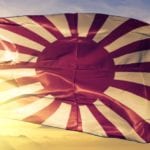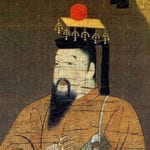 Politics
Politics  Politics
Politics  Weird Stuff
Weird Stuff 10 Eggs-traordinarily Odd Eggs
 History
History 10 Desperate Last Stands That Ended in Victory
 Animals
Animals Ten Times It Rained Animals (Yes, Animals)
 Mysteries
Mysteries 10 Devastating Missing Child Cases That Remain Unsolved
 Creepy
Creepy 10 Scary Tales from the Middle Ages That’ll Keep You up at Night
 Humans
Humans 10 One-of-a-kind People the World Said Goodbye to in July 2024
 Movies and TV
Movies and TV 10 Holiday Movies Released at Odd Times of the Year
 Politics
Politics 10 Countries Where Religion and Politics Are Inseparable
 Weird Stuff
Weird Stuff 10 Freaky Times When Famous Body Parts Were Stolen
 Politics
Politics The 10 Most Bizarre Presidential Elections in Human History
 Weird Stuff
Weird Stuff 10 Eggs-traordinarily Odd Eggs
 History
History 10 Desperate Last Stands That Ended in Victory
Who's Behind Listverse?

Jamie Frater
Head Editor
Jamie founded Listverse due to an insatiable desire to share fascinating, obscure, and bizarre facts. He has been a guest speaker on numerous national radio and television stations and is a five time published author.
More About Us Animals
Animals Ten Times It Rained Animals (Yes, Animals)
 Mysteries
Mysteries 10 Devastating Missing Child Cases That Remain Unsolved
 Creepy
Creepy 10 Scary Tales from the Middle Ages That’ll Keep You up at Night
 Humans
Humans 10 One-of-a-kind People the World Said Goodbye to in July 2024
 Movies and TV
Movies and TV 10 Holiday Movies Released at Odd Times of the Year
 Politics
Politics 10 Countries Where Religion and Politics Are Inseparable
 Weird Stuff
Weird Stuff 10 Freaky Times When Famous Body Parts Were Stolen
10 Uniquely Japanese Arts
For centuries Japan has proved fascinating to Europeans. From the moment that European explorers reached Japan there was a desire to trade with them. “Exotic” goods from Japan could fetch enormous prices on the European market. Of course there was trade in the other direction too but the Japanese were not as keen on European interference in their affairs. For a period of 214 years the Japanese held to a policy of isolation, known as Sakoku, that severely limited contacts between Japan and the rest of the world.
When this ended there was another wave of trade and knowledge of Japan’s culture spread widely. Among the exports were artistic forms seen nowhere else. Here are ten of the most amazing products of Japanese imagination.
10 Unusual And Fascinating Japanese Emperors
10 Kintsugi
The Japanese sense of aesthetic is sometimes radically different from traditional European forms. While the Ancient Romans and Greeks favoured idealised and flawless artworks the Japanese found beauty in impermanence and imperfection. Known as Wabi-Sabi it prizes the weathering and subtle asymmetries created by time and the acts of the craftsmen. Even breakages can become art in the right hands.
One day a Japanese lord hosted a dinner for a philosopher, and he hoped to impress his guest with the gorgeous tea jar set before him. The philosopher said nothing. After he had left the lord smashed the jar into pieces in frustration. The Lord’s friends gathered the fragments of the jar together and glued them together with golden lacquer. This left the breaks clearly visible but created a startling pattern. When the philosopher returned and saw the results he said “Now this is magnificent.”
Thus the art of Kintsugi, “golden joinery,” was born. It shows that things which have been broken can be even more beautiful than those that have not suffered at all – perhaps like people.[1]
9 Kabuki
One of the most distinctive Japanese theatre forms is Noh. Actors move slowly across the stage in heavy, rich clothes and act out scenes from history and legend. Most obviously they wear masks that let the audience know what character they are portraying. While Noh was popular with the ruling classes there was another form of theatre that won popular support.
In a hot, dry summer in Kyoto around 1603 a young lady called Izumo no Okuni started performing for passers by from the dried up river bed in the city. Kabuki, the “art of singing and dancing” that she developed, has been popular ever since. Dealing with more contemporary issues Okuni could lampoon the people around her in a way Noh could not – and not wearing a mask allowed for exaggerated mimicry.
Seeing the actors’ faces however caused some problems. Originally Kabuki was acted by Okuni and purely female troupes. But when the Shogunate found that some were being solicited by the audience for sex they banned women from the stage in 1629. From then on young men would act the female roles. But they too began selling their bodies to the crowd. So eventually only men of a certain age were allowed to act in Kabuki.[2]
8 Origami
Origami probably developed in Japan soon after paper was introduced from China in the 6th century. Given the expense of paper the first bits of paper folded into shapes would likely have had ritual significance. At weddings paper was folded into butterflies to represent the husband and wife and placed around a bottle of sake. The first written reference to origami comes from a poem about this.
The butterflies,
In Rosei’s dream,
Would be origami.
Books on how to fold various animals and shapes out of paper have been popular for centuries but the 20th century saw a huge wave of innovation. Complex geometric shapes, lifelike masks, and moving forms were all folded out of paper. But it’s the story of the 1000 folded cranes that most will recognise. A girl who was caught in the atomic bomb explosion as a child was dying of leukaemia and was told that folding 1000 cranes would grant her a wish. Nearing death she realised that she could not save herself and so she wished for world peace. A statue of Sadako is surrounded by 10,000,000 origami cranes each year at the Hiroshima Peace Park.[3]
7 Dogu Figures
Some art forms flourish for a while before disappearing. When we look back on them however they can seem startlingly modern. The Dogu figurines date from as early as 10,000 BC all the way up to 2,300 BC. To some they look not only modern, they look unearthly. Some have seen the goggle-eyes and bulky shapes as resembling people in space suits – are the Dogu models of ancient aliens?
No. By studying how the figurines developed over time archaeologists show how their unique appearance evolved. Originally the Dogu figures mostly resembled women with small waists, large hips and breasts, and with stylised faces. They may have represented a sort of mother goddess worshipped in ancient Japan. Later Dogu added complex decoration and extreme deformations of the body. It is these ones that have beguiled those who dream of ancient visitors from beyond the stars.[4]
6 Bonseki
Origami may seem like a delicate art form but they are practically permanent compared to Bonseki. Literally meaning “tray rocks,” Bonseki are miniature pictures of the natural world made from nothing more than white sand and small rocks on a black tray.
The art of Bonseki is said to have developed in the 7th century with the Emperor Tenmu who would use a tray and sand to create images of the world around him. It may be that Bonseki was invented as a way of creating images or temporary blueprints of gardens that were being planned. Very temporary – the sand and rocks are not fixed to the tray can can be easily erased.
This is not a flaw in the art but part of its charm. Sitting over the tray and moving grains of sand with a feather is a contemplative act. As one school of Bonseki says “The importance of Bonseki is the peaceful feeling and satisfaction you derive from creating a Bonseki scene and not the result of the work.”[5]
10 Reasons Japanese Geisha Aren’t What You Think
5 Irezumi
Tattoos are found worldwide and have been found on preserved human skin from at least 5,000 years ago. Yet in Japan tattoos have a special cultural significance. For years having a tattoo meant that the wearer was a member of the Yakuza – the Japanese mafia. Even today there are those who will find the sight of a tattoo alarming. Many Japanese public baths forbid those using them to have a tattoo.
Yet Irezumi, “inserting ink,” has survived as a unique Japanese art. The first pictorial tattoos were designed by the master woodblock artists that created so many Japanese masterpieces. It was the legal ban on tattoos in 1872 that left tattoos as the preserve of criminals. Today though anyone with a sufficiently high tolerance for pain can have complex scenes from Japanese history and myth tattooed all over their body. Irezumi tends not to be done in individual tattoos but rather as full sleeves on the arm or leg, or the entire body.
Traditionally the tattoos were applied with a needle on the end of a wooden stick. While some Irezumi masters still use this tool others have moved to the modern electric tattoo gun.[6]
4 Kimono
There is a reason that few people in Japan wear kimonos any more – they cost a fortune. But when you realise the effort that goes into making them their price seems surprisingly reasonable. First to make the silk to be used thousands of silkworm cocoons must be boiled and spun into strands. These must then be soaked, stretched, and dried. To stretch the silk it must be wound in over sticks many metres apart. The person doing this can walk miles every day just going up and down with the silk.
The silk is then bound with other materials in a complicated pattern. This is so that when it is dyed the colour only attaches to certain parts. How the silk is dyed will decided how the final weaving appears. The silk would traditionally have been dyed with natural products, including iron-rich mud. Once dyed the fabric then had to be woven, and a lot of it. It takes around 12m of silk to make one kimono.
If the dyed fabric is not rich enough however more patterns can be added by embroidery. No wonder kimonos would be treasured and passed down by their owners.[7]
3 Netsuke
How do you carry things when you are wearing a kimono? The Japanese answer was not pockets but cloth bags that could be attached to the sash which held your kimono closed. The string that attached these bags could have been held finished with a simple toggle but some Japanese who could afford it had decorative ends called Netsuke made.
These were often carved from ivory, wood, or cast in metal and could take many shapes. Some showed animals, human figures, or mythological beings. They could be playful, philosophical, or frankly pornographic depending on the desires of the owner. Given that netsuke were small and could be easily hidden in the belt they gave their owners wide scope to show off their own senses of humour – whether that was a cheeky mouse or two people copulating on top of a tortoise.[8]
2 Ikebana
Flower arranging is a type of art that appeals to the Japanese appreciation of impermanence. No matter how beautiful the result of your efforts the flowers will wither and die. Ikebana, “making flowers alive,” is the Japanese way of making plants appear their best while they are still alive.
Ikebana developed out of floral offerings made originally at shrines but eventually they were made within the home and placed in special alcoves. The breakthrough in Ikebana came when the tatebana style was introduced – a single branch or stick placed in the centre of the vase that the flower arrangement was built around.
Today the Japanese art of flower arranging is taught worldwide. Those who are pleased with their impermanent flower displays can have them paradoxically immortalised in paintings on hanging scrolls.[9]
1 Gyotaku
How can you show people your mighty fishing haul long after the event? If you wait too long the fish will have gone off and no one will be impressed. The Japanese invented the art of Gyotaku – fish printing – to preserve their catches for posterity.
The art is deceptively simple. First you catch your fish, then you take your ink and paint the fish, then you push some paper on the fish. If the fish is still alive you can release it back into the water, or eat it, and you will still have a print of your catch.
An alternative form of Gyotaku has the paper pressed into the damp surface of the fish and then ink gently tapped onto it to make an impression a bit like a when children do brass rubbing with crayons. The print that is created by either method can then be enhanced with other paints to ensure that the fish’s beauty can last longer than any lingering fishy smell on the paper.



